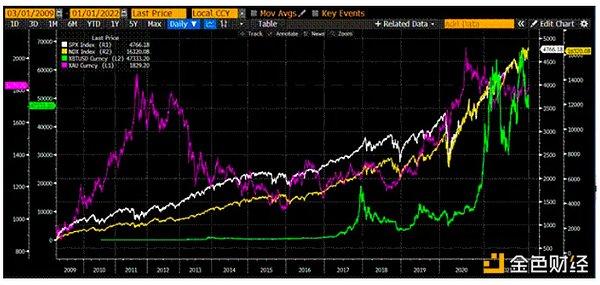Chainfeeds Introduction:
A group of crypto projects and founders led by Solana's new Launchpad platform Believe have been releasing this phrase, together with "Believe in something", becoming a new slogan to kick off the on-chain bull market.
Article Source:
https://www.theblockbeats.info/news/58173
Article Author:
BlockBeats
Perspective:
BlockBeats: A few years ago, Solana proposed in a financing document to build an on-chain NASDAQ - a high-performance blockchain running at NASDAQ speed. However, as the industry evolved, the goal of on-chain trading gradually lost its appeal, as it merely replicated traditional financial functions without redefining its structure. Today, a more imaginative direction is to build an open, permissionless decentralized finance and trading ecosystem - which is precisely the best landing spot for Solana's technical advantages. Whether it's meme coins, Non-Fungible Tokens, or startup project tokens, Solana's high throughput and low latency are naturally suited to meet the issuance and trading needs of these assets. Solana Foundation Chair Lily Liu has mentioned the Internet Capital Markets (ICM) vision on multiple occasions: a global financial infrastructure where all internet users can participate in asset trading, breaking geographical, regulatory, and financial center limitations. By the end of 2024, Superteam's Akshay BD also proposed that ICM is not just about accelerating asset liquidity, but also about enabling good assets to be issued and reached in unprecedented ways. This marks Solana's shift from providing high-frequency trading channels to constructing structural financing mechanisms. Believe is a typical ICM experimental ground. It's not a traditional token issuance platform, but a token generation mechanism with a social context entry: users only need to reply @launch + token name on X (Twitter) to create an on-chain token. Since its launch on April 27, Believe has shown explosive growth. Its platform token LaunchCoin's market value broke $235 million in just a few days, with a rise of over 200%. According to Believescreener data, Believe's total platform revenue in 24 hours reached $7.62 million, with half directly benefiting creators. Unlike Pump.fun, which is based solely on images and contracts, several tokens launched by Believe are accompanied by actual product prototypes or concepts, such as DUPE for searching similar product prices, SuperFriend to help developers communicate with code, and CreatorBuddy, an AI social content tool. By enabling low-barrier token issuance, incentivizing creators, and combining executable visions, Believe attempts to transform token issuance from a speculative funding tool to a vision fundraising channel. Despite significant bubble elements, its mechanism indeed opens a path that could be scaled: allowing users to invest in ideas, pay for content, and bet on experiments. Although platforms like Believe bring short-term hits like Launchcoin and raise market concerns about another bubble, they actually reflect a more structural transformation: Crypto is transitioning from narrative-driven to real asset capture. Akshay BD points out that Crypto has successfully made it easier for more people to invest in assets - you only need a wallet and a bit of stablecoin to trade directly, bypassing intermediaries like banks and brokers. However, the unresolved question is: Where is the mechanism for issuing good assets? The current on-chain token market is flooded with meme coins and shell projects, while truly valuable projects are often marginalized due to lack of financing entry points. What ICM truly aims to solve is: How can assets with economic structural advantages and real demand be discovered and invested in a decentralized manner? To determine if an asset is suitable for tokenization, one can look at whether it benefits from the current macro environment and whether it's difficult to purchase through traditional financial means. The success of Bitcoin and USDT stems from such structural arbitrage.
Content Source






